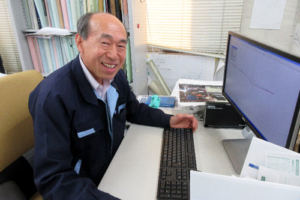I’ve notice some scopes are extremely parallax sensitive to temperature. *cough* NF (I still use two 7-35x ATACR anyways).
anyone else notice sensitive parallax with temp changes?
Below is from March scopes Facebook post about their glass:
anyone else notice sensitive parallax with temp changes?
Below is from March scopes Facebook post about their glass:
Effect of Temperature Anti-drift lens in March Scope 10-60×56 High Master-----------
We have received inquiries regarding the effect of Temperature Anti-drift lens. Our top lens designer, Nishikubo-san calculated with March Scope 10-60x56High Master. Temperature Anti-draft Lens is incorporated in the High Master lens system of 10-60×56, 5-42×56, 4-40×52, 6-60×56 so that it will create a more stable lens system that naturally adapts to changes in temperature to maintain focus and clarity over a wide range of conditions. This was originally developed to meet the requirement of Field Target shooters who are sensitive to subtle temperature change. (*Fixed 40-60x52High Master and 48x52High Master do not incorporate Temperature Anti-draft Lens in their High Master lens system as they have less lenses and therefore less susceptible than other High Master models.)
Comparison with March Scope 10-60×56 High Master
(1) Before : High Master lens system without Temperature Anti-draft Lens
◆Temperature change : 35 degrees Celsius difference
25 degrees Celsius (77 degrees Fahrenheit) → minus 10 degrees Celsius (14 degrees Fahrenheit)
◆Change in focal point
∞(infinity) → 350m (about 383yard)
When there is a 35 degrees Celsius difference,
focal point first set at ∞(infinity) will be shifted to 350m (about 383 yard).
(2) After : High Master lens system with Temperature Anti-draft Lens
◆Temperature change : 35 degrees Celsius difference
25 degrees Celsius (77 degrees Fahrenheit) → minus 10 degrees Celsius (14 degrees Fahrenheit)
◆Change in focal point
∞(infinity) → 1.3km (about 1422 yard)
It may be easy to see the change between infinity and 350m,
but it is very difficult for a human eye to detect the difference between infinity and 1.3km and some people may not feel any focal difference at all.
The newly developed High Master lens system with Temperature Anti-draft Lens incorporated within 10-60×56, 5-42×56, 4-40×52, 6-60×56 High Master models is way less sensitive to temperature difference than ever !! This new system will naturally adapt to changes in temperature to maintain focus and clarity over a wide range of conditions. (*Above is an example based on calculation. When inputting different values, there will be a different result.)
You can also enjoy Nishikubo-san's story in this article.

Meet the March Scope’s Top Lens Designer – Nishikubo | MARCH Scopes | DEON Optical Design CorporationMARCH Scopes | DEON Optical Design Corporation
MARCH Scopes Official Sitemarchscopes.com
March Scopes passionately support serious shooters so that they can continually enhance their performance

